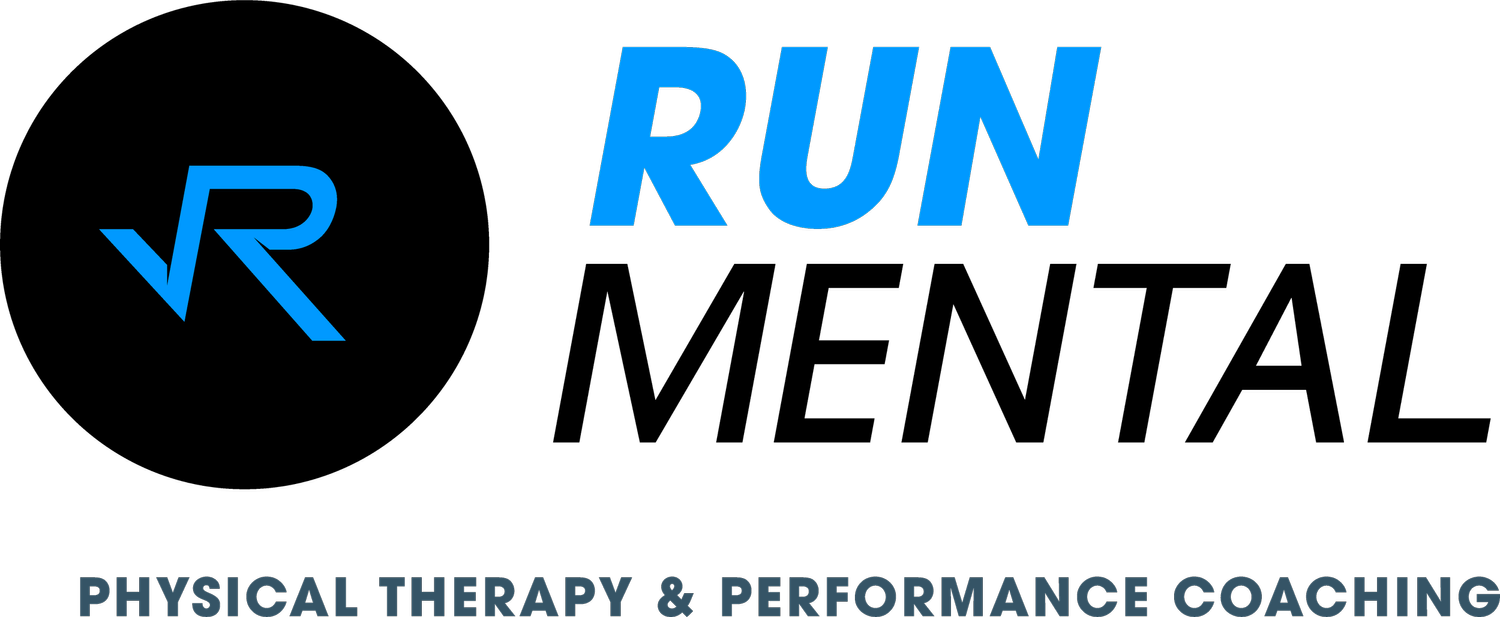Do I Have tendinopathy?
Tendinopathies are quite common in runners and thus something I see often as a physical therapist specializing in the management of runners. Running is a plyometric activity meaning there is an impact with the ground consisting of a period with force absorption where energy is stored followed by a period with force is production where that stored energy is released. This energy storage and release mechanism occurs within our tendons, providing us with free energy for propulsion and is why they are so important to running. Unfortunately, this high demand of the tendons can also be problematic if not properly prepared, leading to a tendinopathy. However, sometimes tendon pain is not as it seems. What I mean is that pain around a tendon is not the same as pain related to the tendon specifically.
In this article, I want to outline a few key characteristics of how a tendinopathy presents. This way, you can have more certainty about what you might be dealing with and therefore, embark on the appropriate direction in getting back to running strong and confident. There are a few hallmark signs that would indicate we are dealing with a tendon as opposed to another nearby tissue or injury.
Location (Reference 1,2)
A tendon will almost always be sensitive to touch directly over the tendon and over the tendon only. It doesn’t have to be throughout the whole tendon that is accessible via palpation, but will be somewhere on it. However, it is worth noting that it is not unusual for non-pathological tendons to be tender too. Additionally, tenderness with palpation can also lag behind functional progress and therefore is not something I encourage to be used to measure progress, but more aiding in your understanding of is this the tendon specifically relating to symptoms or adjacent tissue.
Consider the pinch, point, rub test. This is generally best for the patellar and Achilles tendons, but can work to some extent for the posterior tibialis and proximal hamstring tendons as well. If you are pinching or pointing to a specific spot where symptoms are the worst, we can add that to the list of reasons we are dealing with a tendinopathy. Symptoms rarely are diffuse in nature. If you are rubbing on and around the surrounding area of the tendon there is a decreased potential it is the tendon specifically and may involve a nerve, referral from the lumbar spine, fat pad, or something else specific to that region, but not necessarily. This is only one test and not to be used in isolation.
Predictable (Reference 3,4)
Tendon pain is consistently predictable in that intensity, duration, and/or frequency of loading matters. An increase in any of the above variables will result in an increase in symptoms. Conversely, when you stop activity there is almost an immediate cessation in symptoms. Most notably, activities that involve some form of energy storage and release are the most provocative. Think fast movements such as running and jumping or anything where there is a quick change in direction. Even slow running is occurring relatively fast with ground contact times roughly around a quarter of a second. With conditions that don’t involve the tendon, pain can be less predictable in nature in that as you do more demanding activities, the symptoms don’t follow a linear path like a tendon related pain would.
Tendons warm up (Reference 1,4,5)
We find that tendons are more symptomatic following periods of inactivity such as first thing in the morning or after sitting for an extended period. However, once you get moving with lower load activity things improve. We call this the “warm up phenomenon”. It isn’t only consistent with tendon related pain though as conditions such as patellar femoral pain and osteoarthritis also typically behave this way. An improvement in symptoms with activity is likely related to an improvement of fluid dynamics leading to increased pressure in the tendon. Not only does it create increased symptoms, but also morning stiffness.
What Tendon Pain Isn’t
Tendon related pain will not involve numbness or tingling which would indicate nerve involvement. As mentioned above it should be localized to the tendon and oftentimes, in a fairly specific spot on the tendon with something like the Achilles and patellar that is larger. If symptoms are rather wide spread or you are unable to localize the symptoms, it may be coming from a nearby structure like a bursa, fat pad, or joint. Symptoms can also be referred from the lumbar spine. If any of the above is the case, making it seem less like a tendon, it would be worth talking with a trusted health care professional to determine what you are specifically dealing with as the intervention(s) can be drastically different depending on what is going on.
Having a strong game plan and the right people in your corner to help support and guide you can make all the difference in how quickly as well as how well you bounce back from an injury. Developing a strong game plan all starts by having confidence in what you’re dealing with as that game plan can drastically change depending on if you are truly dealing with a tendinopathy compared to a bone stress injury or pain referred from the spine.
If you feel that you need any help navigating the waters of pain or injury, especially with a tendon, please don’t hesitate to reach out to me or another trusted professional. You can connect with me via phone at (719) 270-3155 or email at runmental@gmail.com. I am also active on Instagram and within my Facebook group, Strength in the Springs, where I frequently post educational material about running rehab and training.
Happy running!
References
Kountouris A., Cook J. Reahbilitation of Achilles and Patellar Tendinopathies. Best Pract Res Clin Rheumatol. 2007 Apr;21(2):295-316
Cook J., Kahn K., Kiss z., et al. Reproducibility and clinical utility of tendon palpation to detect patellar tendinopathy in young basketball players. Br J Sports Med. 2001 Feb; 35(1): 65–69.
Rudavsky A., Cook J. Physiotherapy management of patellar tendinopathy (jumper's knee). J Physiother. 2014 Sep;60(3):122-9
Rio E., Moseley L., Purdam C., et al. The pain of tendinopathy: physiological or pathophysiological?. Sports Med. 2014 Jan;44(1):9-23
Pringels L., Cook J., Witvrouw E., et al. Exploring the role of intratendinous pressure in the pathogenesis of tendon pathology: a narrative review and conceptual framework. Br J Sports Med. 2023 Aug;57(16):1042-1048

